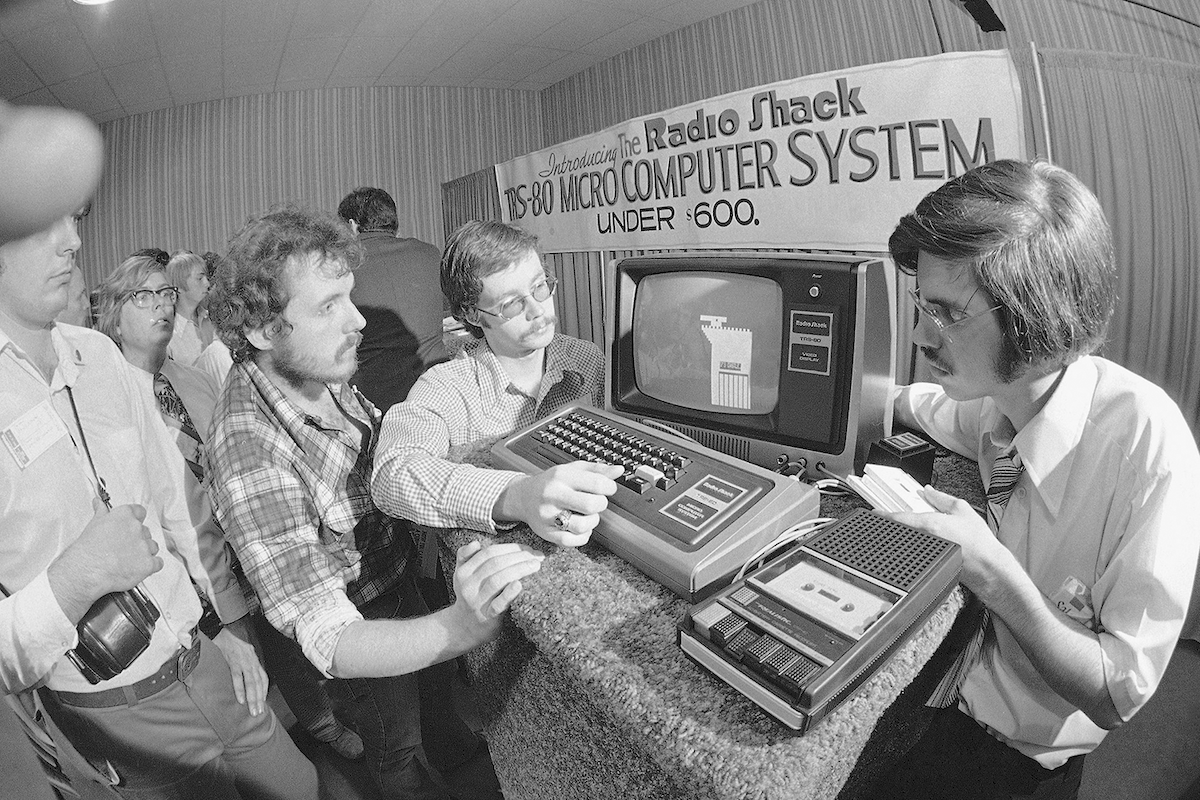

On November 27, 1982 my wife and I drove to Woburn, Massachusetts to attend a wedding. While we were waiting at our motel that afternoon, dressed and ready to go, I staved off boredom by picking up the manual for a new “personal computer” program called VisiCalc, the “visible calculator.” It was still in its shrinkwrap after six months. Little did I know that this bland tech manual would change my life forever.
Stuck in an analog world
At the time I was a full-time high School English teacher and spent the rest of my time teaching graduate counseling courses at a small Connecticut college and working as a therapist. I was busy, but I also felt stuck.
I was 35 years old, my wife and I had two kids, and we had a nice house in a comfortable suburb. I even drove a turbocharged Mustang. But I still felt unfulfilled. I thought about changing careers but had no idea what else could I do. I already had two graduate degrees so going for a third didn’t seem like the answer, especially since I wasn’t drawn to any particular field.
I thought of computers as large locked, refrigerated rooms with raised flooring and huge electrical bills.
For fun, I signed up for an informal computer class, two afternoons a week for six weeks. Before I took the class, I thought of computers as large locked, refrigerated rooms with raised flooring and huge electrical bills. Engineers and scientists in lab coats operated them. They looked like they were from a closed society, and spoke their own language.
In the class we used much smaller Commodore PET computers with cassette tape recorders for storage. We learned a little bit about a computer language called BASIC,” Beginner’s All-purpose Symbolic Instruction Code.” We couldn’t do much with it but it was fun.
I was intrigued enough with the class that I bought my first personal computer for use in my home, a Tandy Radio Shack TRS 80 Model III, in May 1982. I wasn’t sure what I would do with it except maybe learn how to use Scripsit, the word processing program that ran on that computer only. Because I had some extra cash, when the person who sold me the computer suggested I buy a copy of Visicalc, the visible calculator, I bought that, too, but wasn’t really very interested in formulas and calculators.
The wedding that changed me
When we headed out for our friends Jim and Jane’s wedding, I brought that still-wrapped Visicalc manual. People had lectured, demoed, and talked about Visicalc, which ran on the Apple II, the Radio Shack TRS 80s, and the still-new IBM PC, but I didn’t pay much attention. Since I’d paid $100 for the program, it seemed wasteful not to learn a little about it myself. I figured I’d just read the manual that afternoon until it either put me to sleep or began to make sense. At least I would learn something.
I don’t remember at what moment it happened, but after reading the manual for a while, I got it. I understood what people meant when they called Visicalc the personal computer “killer app” — the first time that term was ever used. It didn’t just turn on a light bulb in my head. Entire rows of floodlights suddenly filled the space between my ears.
I was so excited that my wife had to get serious with me to get into the car so we wouldn’t miss the wedding entirely.
What I “got”
After that day I often referred to spreadsheet programs, and Visicalc in particular, as an information form of Archimedes lever. Most of my friends and some of my family were convinced I was nuts, but I started hanging out with others who were similarly smitten. We were knocked out by the potential of personal computers to change every aspect of our lives.
I had always loved weighted priority decision-making, where you’d set up rows of alternative choices, columns of decision factors, and then rate each choice on a scale of 1 to 10 to get a score. When that manual helped me figure out that spreadsheets could not only make it easy to set up those decision matrices, but also a snap to add, delete, and modify choices and factors … I was knocked out. When it taught me about using variables with named cells instead of manually entered values … woah. I cannot describe how excited I was.
By the time the wedding and reception were over that frosty November night, I wasn’t sure what I was going to do with personal computers, but I knew I had finally found my life’s direction.
The new Bruce Brown
Within six months I left teaching. Eighteen months later I left our counseling practice — which still exists. After two years I stopped teaching counseling courses and was teaching graduate courses in business applications of personal computing. I co-founded a personal computer consulting firm, which friends said would never make last — it, too still exists, though I left in 1988.
For more than 20 years I wrote for major personal computer publications and now I write for Digital Trends. And it all happened because I met Visicalc on a cold winter’s afternoon in a motel room.
[sOURCE:-digital Trends]
